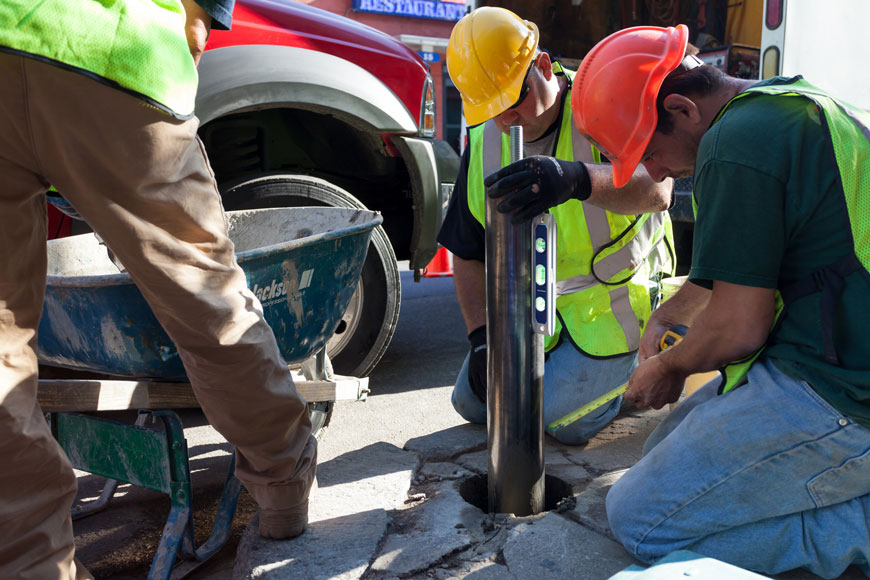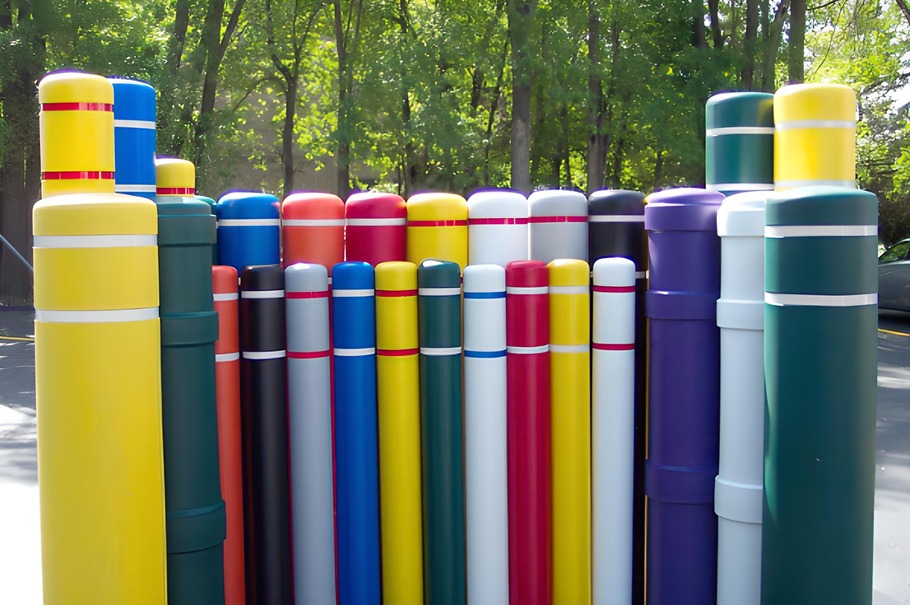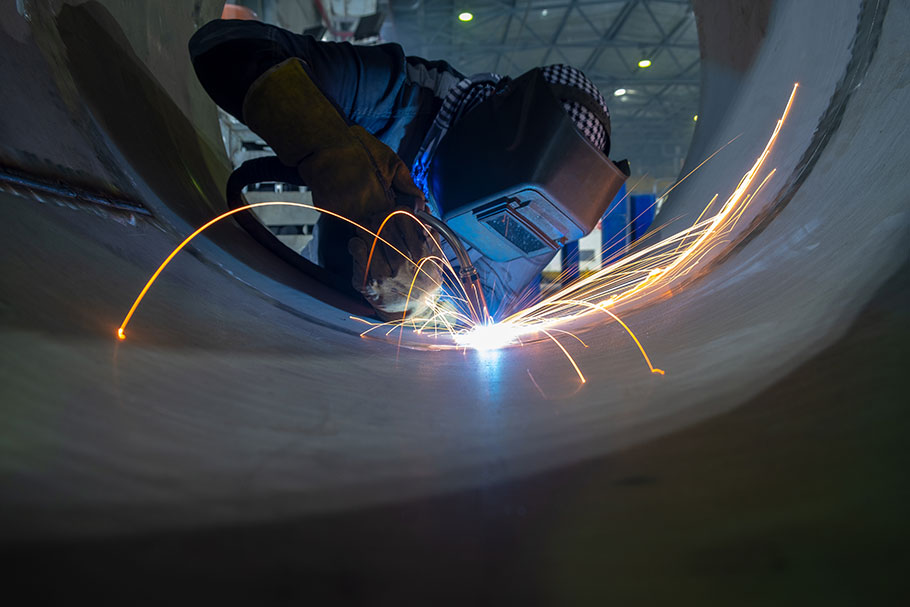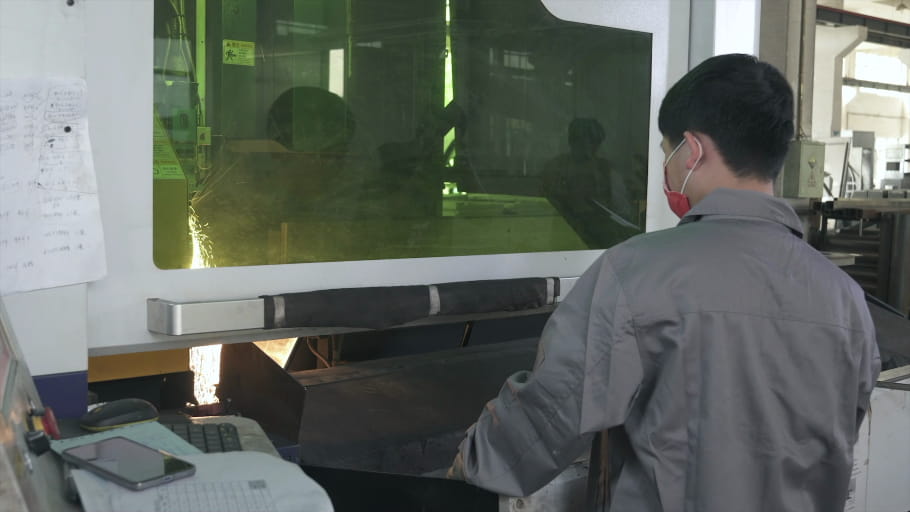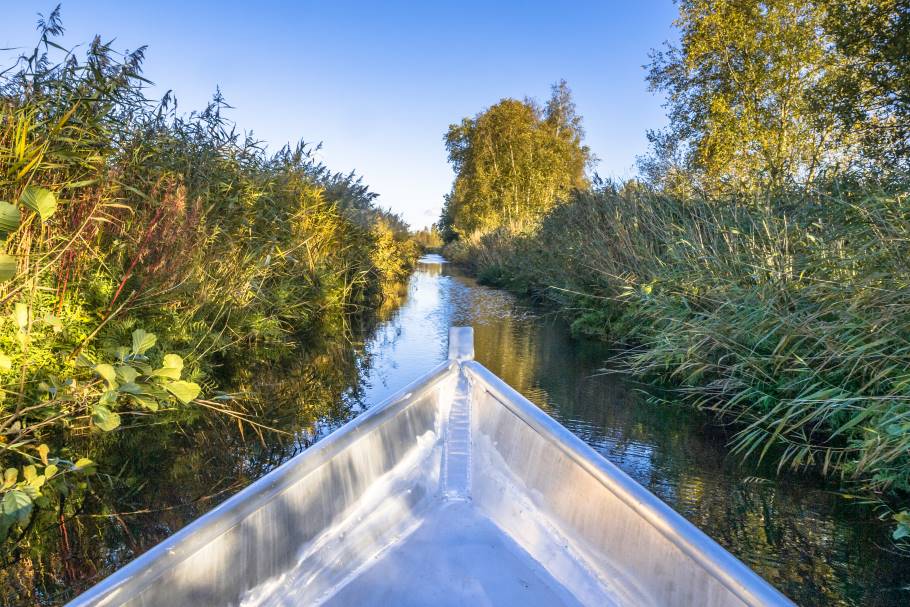Finding casting defects through destructive and non-destructive testing
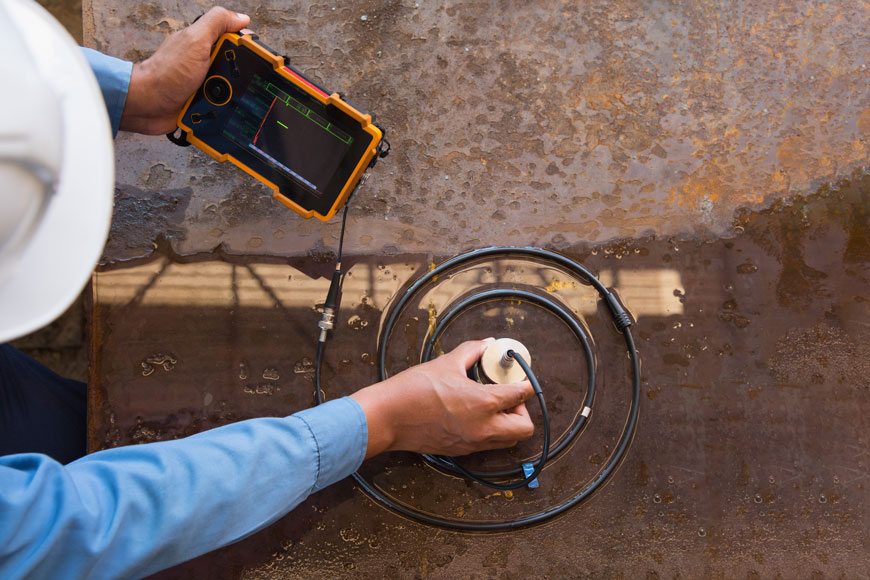
Every step in the process of metal casting, from patternmaking to heat treating, is done carefully to avoid problems with the soundness, surface finish, mechanical properties, and final dimensions of the finished casting. Yet even castings made with diligence should undergo inspection for quality control. Small problems can arise unexpectedly, and many castings have mechanical requirements that may be undermined by a hidden defect. Castings inspection allows foundry and clients to feel confident they have a quality casting.
Casting inspection methods are in place to ensure any hidden defects are identified during the manufacturing process. Some common casting defects include surface defects, inclusion defects, and cooling defects.
Destructive testing
In every production run, the foundry will choose a few samples and submit them to destructive testing. The casting is cut, and the properties of the metal inspected closely. The tester will look for inclusions, porosity, and shrinkage. Although destructively testing one casting does not guarantee anything about the other castings in the run, it does give a sense of the overall quality of the process. Radiographic and ultrasonic technologies have decreased the importance of destructive testing, but it is still used to inspect the quality and make evaluations about a run.
Non-destructive testing (NDT)
Non-destructive testing is done by foundry workers, clients, and NDT technicians to verify the internal and external soundness of a casting without damaging the casting itself.
Visual Inspection
This method uses the human eye to identify surface defects, cracks, gas evolution, slag or sand inclusions, misruns, cold shuts, and molding flaws.
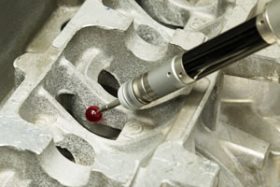
Dimensional Inspection
This type of castings inspection is undertaken to ensure a part meets dimensional requirements/tolerances. This can be done manually or with a coordinate measuring machine (CMM) that uses probes to get very precise measurements.
Liquid Dye Penetrant Inspection (LPI)

Finds tiny cracks, pores, or other surface imperfections in all types of metal castings which would be hard to see by looking. The tester first cleans the casting to remove any particles of grit or dust that may prevent the liquid dye from going into cracks in the metal.
Once clean and dry, the tester bathes the casting with a penetrant solution. Different types of LPI use different solutions, but generally it’s a brightly dyed oil with high capillary action and low viscosity, meaning it will run freely into cracks in the casting. This dye is left for a “dwell time” so that it can work its way into any invisible crevices.
After sufficient time has passed to allow the liquid to do its job, excess is removed from the surface. This is generally done by gently wiping with a damp cloth, making sure not to flood the casting which could remove the dye in the cracks.
The tester then applies a special developer and the casting defects become clearly visible.
Magnetic Particle Inspection (MPI)
MPI is like LPI in that it is used to find small cracks and holes on the surface or shallow subsurface of a casting. However, this process can only be used in castings made of ferromagnetic metal that can create a magnetic field—metals like iron, cobalt, nickel, and some of their alloys. The casting is magnetized, usually with electromagnets, to start the test.
A magnetic field is stronger in metal than in air. Where there are discontinuities like cracks or holes in the surface or close subsurface of a casting, the magnetic field induced will be disrupted.
Very deep cracks will often not create enough of a magnetic distortion at the surface to be found in this way.
To find the disruptions, the casting is sprayed with a dust or liquid containing small particles of iron oxide or other substance that react in a magnetic field. This sprayed particulate will cluster near the edges of distortions, outlining places where the magnetic flux is low. Therefore, using magnets and magnetic powder can be used to show disruptions where there is more air than metal, in any cracks or above any holes. The MPI method is used to inspect castings and is also used in the field to test metal fatigue in already operational pipes and structures. It can detect stress cracking invisible to the naked eye.
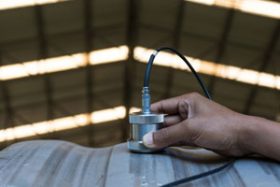
Ultrasonic Testing (UT)
This test finds defects by using high frequency acoustic energy transmitted into a casting, in a technology like the ultrasounds used by medical technicians. Sound waves travel through a casting until they hit the opposite surface or an interface or defect. Any barrier reflects the sound waves, which bounce back and are recorded for an analyst to look at. The pattern of the energy deflection can indicate the location and size of an internal defect. This non-destructive test can also be used to examine wall thickness, and the nodule count of ductile iron. Extremely small flaws can be found with UT at very large depths, allowing for a great deal of accuracy and confidence. An experienced technician can even make estimates as to the nature of an alloy by looking at the acoustic signature of an unknown metal.
Ultrasonic testing requires knowledge and experience for an accurate interpretation of results. The part must be cleaned of loose scale and paint, and must not be too irregular, small, or thin. In most cases, a surface to be examine with ultrasound must be wet, and often water is used: if the surface will rust, then an anti-freeze solution with rust inhibitors can be used instead.
Radiographic Inspection (X-Ray)
X-rays create images like those in a hospital that show broken bones. The ghostly images produced through casting X-Ray show dark spots where there are shrinkage cavities, the small breaks and crevices of heat cracking, or the pinhole dots of porosity. These images help an experienced metalworker decide if the casting’s mechanical properties are compromised by shrinkage, inclusions, or holes and whether they can be fixed before castings are shipped.
During the radiographic castings inspection process, a casting is exposed to radiation from an x-ray tube. The casting absorbs part of the radiation, and the remaining portion of the radiation exposes the radiographic film. Denser parts of the casting will withstand the radiation penetration, so the film is exposed to a lesser degree in those areas, giving the film a lighter appearance. Less dense parts of the casting allow more radiation penetration, resulting in greater film exposure. Every space in the casting therefore casts a “shadow” on the final x-ray, caused by radiation passing more easily through it, and the x-ray depicts any crack, void, or inclusion as a dark area on the film.
After castings inspections are completed by the foundry, the inspected and accepted casting is sometimes used as-is. Common surface irregularities or discontinuities may not matter to the use of an otherwise sound product. Sometimes, finishing can address observed issues. The casting may go back to heat treatment, or on to further processing, which may include painting, rust preventive oils, other surface treatment like hot-dip galvanizing, and machining. Final preparations may also include electrodepositing plated metals or powder coating for cosmetic or operational requirements.



